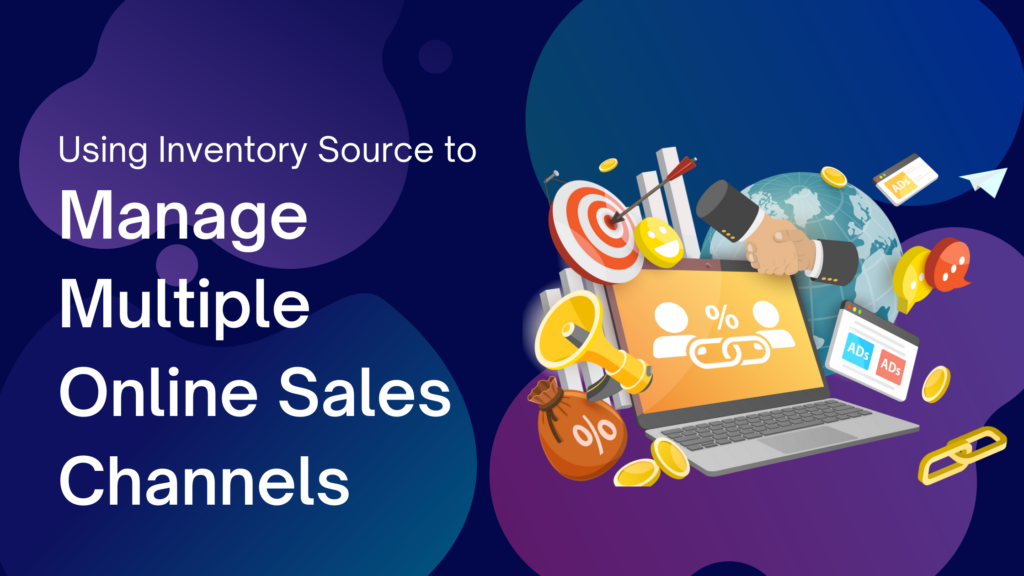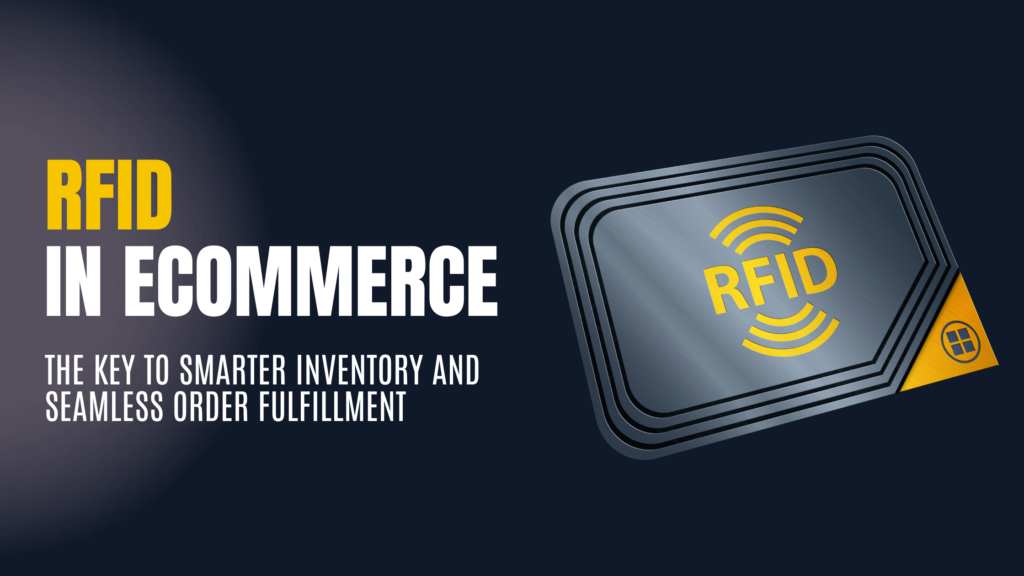Using Inventory Source to Manage Multiple Online Sales Channels
What is Multichannel Inventory Management?
Multichannel inventory management is a process that involves tracking and managing inventory across multiple sales channels. It enables retailers to have a centralized view of their stock levels, ensuring accurate and up-to-date information across all platforms. By using cloud-based software, retailers can sync their inventory data in real-time, eliminating the risk of overselling or disappointing customers.
Importance of Multichannel Inventory Management
Inventory is the lifeblood of any retail business, and effective management is crucial for success. However, relying on manual methods or outdated systems can lead to errors, overselling, and poor customer experiences. Multichannel inventory management provides a comprehensive solution by automating inventory tracking and syncing stock levels across all sales channels. This ensures that retailers have accurate visibility into their inventory, allowing them to make informed decisions about restocking, fulfillment, and sales strategies.
Benefits of Multichannel Inventory Management
Real-time Visibility
 One of the key benefits of multichannel inventory management is real-time visibility into stock levels. With a cloud-based system, retailers can automatically sync inventory levels across all platforms. This means that when a sale is made on one channel, the inventory is updated in real-time across all channels, preventing overselling and ensuring accurate stock information. Real-time visibility also allows retailers to identify products that need to be reordered, avoiding lost sales and optimizing inventory levels.
One of the key benefits of multichannel inventory management is real-time visibility into stock levels. With a cloud-based system, retailers can automatically sync inventory levels across all platforms. This means that when a sale is made on one channel, the inventory is updated in real-time across all channels, preventing overselling and ensuring accurate stock information. Real-time visibility also allows retailers to identify products that need to be reordered, avoiding lost sales and optimizing inventory levels.
Improved Customer Service
Accurate inventory management is crucial for providing excellent customer service. By having real-time visibility into stock levels, retailers can avoid disappointing customers by selling products they don’t have in stock. Multichannel inventory management also enables retailers to offer delivery options based on real-time stock levels. For example, customers can be directed to the nearest location where an item is in stock, or items can be shipped from the closest warehouse, reducing shipping times and costs. These personalized options enhance customer satisfaction and loyalty.
Valuable Insights
Multichannel inventory management provides retailers with valuable insights that can inform business decisions. By analyzing past sales data, retailers can identify popular products, high-demand categories, and trends. This data can be used to optimize inventory levels, forecast sales, and make informed purchasing decisions. Insights derived from multichannel inventory management can also help retailers identify slow-moving products that may need to be discounted or removed from automatic reorders. Additionally, processes such as data warehouse migration help streamline access to historical and real-time data, providing a clearer picture of sales patterns and inventory trends to support better decision-making.
Cost Savings
Effective inventory management can lead to significant cost savings for retailers. By avoiding overselling and stockouts, retailers can reduce the need for refunds, which can be costly and impact the bottom line. Multichannel inventory management also helps retailers optimize inventory levels, preventing deadstock and reducing the need for excessive storage space. Additionally, by shipping items from the location closest to the customer, retailers can minimize transportation costs, especially for retailers offering free shipping.
Business Growth
As retailers expand their sales channels to reach more customers, multichannel inventory management becomes essential for business growth. With the average retailer selling across four sales channels, the ability to manage inventory seamlessly across platforms is crucial. Multichannel inventory management systems allow retailers to scale their operations by automating processes and providing a centralized hub for inventory management. By streamlining inventory across channels, retailers can focus on expanding to new platforms and reaching a wider customer base.
How to Manage Inventory Across Multiple Channels
To effectively manage inventory across multiple sales channels, retailers need a robust multichannel inventory management system. Here are the key steps to consider:
Cloud-Based Inventory System
Start by choosing a cloud-based inventory management system that integrates with your retail point of sale (POS). This system should offer real-time analytics and sync inventory levels automatically whenever a sale is made or stock is received. A cloud-based system ensures that your inventory data is accessible from anywhere, providing flexibility and ease of use.
Integration with Retail Point of Sale
Ensure that your multichannel inventory management system integrates seamlessly with your retail POS. This integration allows for the automatic syncing of inventory data across all sales channels. When a sale is made or stock is added to your POS, the inventory count is updated across all platforms, providing accurate and real-time visibility.
Syncing Inventory Across Channels
The key to successful multichannel inventory management is syncing inventory data across all sales channels. This ensures that stock levels are consistent and accurate across platforms. When a sale is made on one channel, the inventory data is automatically updated across all channels, preventing overselling and optimizing stock allocation.
Choosing the Best Multichannel Inventory Management Software
When selecting a multichannel inventory management software, it’s essential to consider the following factors:
Automation Capabilities
Look for a system that offers automation capabilities to streamline inventory management. The software should automatically adjust inventory levels, send alerts when stock is low, and generate purchase orders based on predefined thresholds. Automation saves time and minimizes the risk of human error.
Ease of Use
Choose a user-friendly system that allows for easy product cataloging and management. Look for features that enable you to upload product photos, create descriptions, and expand your product line effortlessly. A user-friendly interface ensures efficient inventory management and scalability.
SKU Generation
Systems that auto-generate SKUs (stock keeping units) simplify inventory tracking and management. SKUs help catalog new inventory variations and improve data accuracy. Auto-generated SKUs reduce costs and ensure individual inventory items align with business objectives.
Analytics
Select a multichannel inventory management system that provides robust real-time analytics. These analytics should include sales, profitability, cost of goods sold (COGS), and sell-through reports. Accessible analytics empower retailers to make data-driven decisions and optimize inventory levels.
Integrations
Consider the integrations offered by the software. Look for compatibility with other tools you use, such as staff scheduling, loyalty programs, and accounting software. Seamless integration enhances efficiency and streamlines operations.
Case Study: Tips from a Multichannel Retailer
To gain insights from a multichannel retailer, we spoke with XYZ, a successful retailer with experience in managing inventory across multiple sales channels. XYZ relies on Inventory Source, a leading multichannel inventory management solution, to streamline their inventory, orders, and logistics. Here are their top tips:
Regularly Sync Inventory Data – XYZ recommends syncing inventory data at regular intervals to ensure accurate stock levels across all channels. This prevents overselling and improves customer satisfaction.
Leverage Automation – Utilize Inventory Source’s automation capabilities to streamline inventory management. Automated alerts for low stock levels and automatic purchase order generation save time and reduce manual errors.
Optimize Fulfillment Processes – XYZ emphasizes the importance of efficient fulfillment processes. By syncing inventory data in real-time, they can fulfill orders promptly and provide excellent customer service.
Utilize Analytics – XYZ advises leveraging Inventory Source’s analytics to gain valuable insights into sales trends and inventory performance. These insights help them make informed decisions and optimize their inventory strategy.
By following these tips, XYZ has been able to efficiently manage their inventory across multiple sales channels, ensuring accurate stock levels and seamless order fulfillment.
Conclusion
Multichannel inventory management provides retailers with real-time visibility, improved customer service, valuable insights, cost savings, and business growth opportunities. By choosing the right multichannel inventory management software and implementing best practices, retailers can streamline their operations and maximize their sales potential. Embrace the power of multichannel inventory management to take your retail business to new heights.




